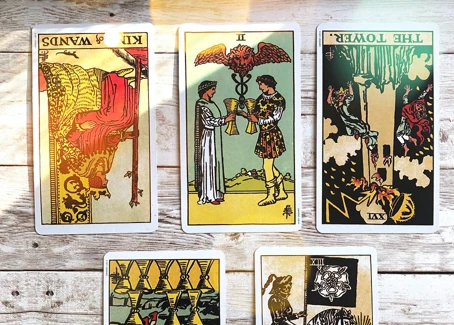What if there was a powerful tool that could unlock hidden messages, divine the future, and provide insight into our deepest desires and fears? Enter the world of Tarot cards. These mystical cards have captivated people for centuries, offering a unique glimpse into the human psyche and the universe at large. In this article, we will explore the power and symbolism behind Tarot cards, with a specific focus on the significance of reversal. By understanding the hidden meanings behind reversed cards and the intricate symbols and imagery they possess, we can gain a deeper understanding of ourselves and the world around us. Get ready to embark on a journey of self-discovery and spiritual enlightenment as we unravel the mysteries of Tarot and embrace the power of reversal.
Contents
- Understanding Tarot Cards
- The Significance of Reversal
- Symbols and Imagery
- Common Reversed Card Interpretations
- Tips for Reading Reversed Cards
- Conclusion
-
Frequently Asked Questions
- What is the origin of Tarot cards?
- How does Tarot card reading work?
- Can Tarot cards predict the future?
- What is the significance of reversal in Tarot cards?
- How do you interpret reversed cards in Tarot readings?
- Are there common symbols in Tarot cards?
- Can anyone learn to read Tarot cards?
- How accurate are Tarot card readings?
- Can Tarot card readings reveal hidden aspects of oneself?
- Are Tarot readings only for predicting the future?
- References
Understanding Tarot Cards
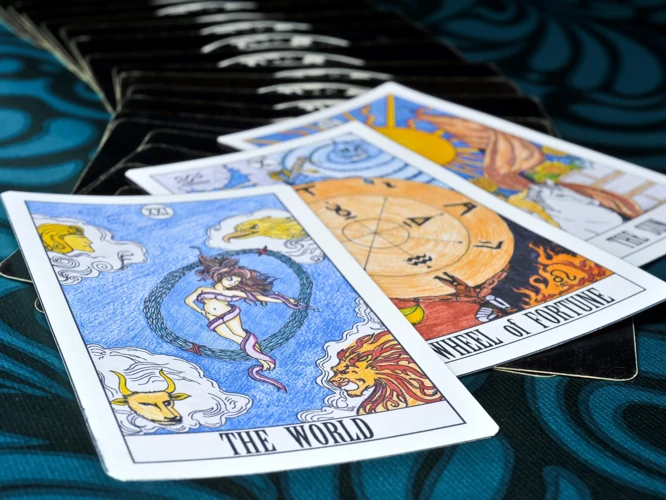
Understanding Tarot cards is like delving into a rich tapestry of symbolism and meaning. Tarot decks are divided into two main categories: the Major Arcana and the Minor Arcana. The Major Arcana consists of 22 cards, each representing a significant life event or archetypal figure, while the Minor Arcana is made up of 56 cards, divided into four suits (Wands, Cups, Swords, and Pentacles), each corresponding to a different aspect of human experience. Each card in the Tarot deck carries its own unique symbolism, with intricate artwork and vivid imagery that tells a story and evokes emotions. These symbols serve as a bridge between the conscious and unconscious mind, allowing us to tap into our intuition and gain insights into our past, present, and future. Whether you’re a beginner or a seasoned Tarot reader, diving into the symbolic meanings of Tarot cards can unlock a world of wisdom and guidance. So, grab your deck, shuffle the cards, and let’s embark on a journey of self-discovery and divine exploration.
Major Arcana
The Major Arcana is a pivotal component of Tarot cards, consisting of 22 cards that hold immense symbolic significance. Each card in the Major Arcana represents a different archetype or life journey, showcasing the major themes and lessons we encounter on our path. These cards are often considered the anchor of a Tarot reading, offering profound insights and guidance. With powerful titles like The Fool, The Magician, The High Priestess, and The World, the Major Arcana captures the essence of the human experience and the universal forces at play. Each card is adorned with captivating imagery and symbols (source: unlocking-mystery-interpreting-symbols-reversed-tarot-cards), inviting us to explore the depths of our consciousness and tap into the collective wisdom that transcends time and space. Whether you’re embarking on a new journey or seeking answers to life’s most profound questions, the Major Arcana provides a roadmap for self-discovery and spiritual growth. Through its archetypal imagery and profound symbolism, this subset of Tarot cards has the power to unlock hidden truths and illuminate the path ahead.
Minor Arcana
The Minor Arcana is an essential component of the Tarot deck, providing detailed insights into our everyday experiences and emotions. Comprising 56 cards, this Arcana is divided into four suits: Wands, Cups, Swords, and Pentacles. Each suit represents a different aspect of human life. The Wands symbolize creativity, passion, and inspiration. Cups represent emotions, love, and relationships. Swords embody intellect, conflict, and decision-making. Pentacles signify material possessions, wealth, and the physical realm. Each suit contains ten numbered cards and four court cards (Page, Knight, Queen, and King).
The numbered cards in the Minor Arcana depict situations, challenges, and opportunities we encounter throughout our lives. The court cards represent individuals or personality traits that may influence these situations. The symbolic imagery on these cards serves as a mirror, reflecting our own experiences and inviting introspection.
When reading the Minor Arcana, it is crucial to consider both upright and reversed card meanings. Reversed cards can indicate obstacles, blocked energy, or a need for introspection and growth. To unlock the mysteries behind reversed Tarot cards, interpretation of their symbols is crucial. The unique meanings and symbolism of each card provide valuable insights into the challenges and opportunities present in our lives.
By exploring the Minor Arcana, we can gain a deeper understanding of the complexities of human existence. These cards act as a guide, illuminating the diverse aspects of our emotions, thoughts, and experiences. As we navigate the intricate web of life, the Minor Arcana offers profound wisdom and guidance, allowing us to make informed decisions, find balance, and uncover our true selves.
The Significance of Reversal
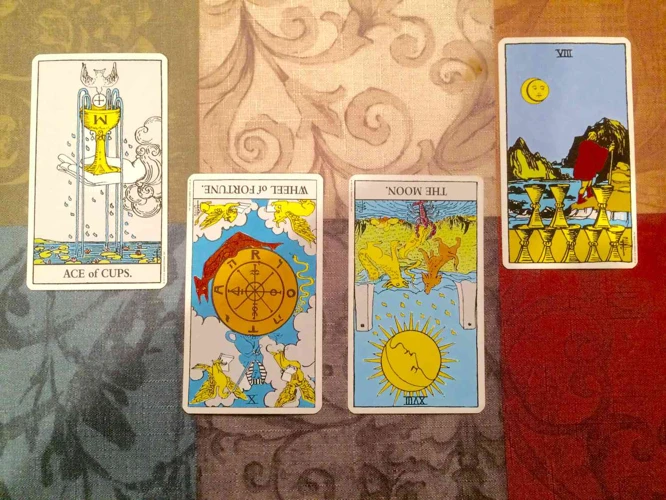
The significance of reversal in Tarot cards cannot be underestimated. When a card appears in a reversed position, it alters the meaning and adds a layer of complexity to its interpretation. Reversed cards often bring forth a shift in energy and suggest a need for introspection and reflection. They can indicate blocked or stagnant energy, internal conflicts, or the need for a different perspective. By exploring the symbolic meanings of reversed Tarot cards, we can uncover hidden truths and gain a deeper understanding of our current situations and potential paths forward. Whether you are a novice or an experienced Tarot reader, unlocking the mystery of reversed cards allows for a more nuanced and nuanced interpretation of the messages the cards hold. So, let’s dive deeper into the symbolic meanings of reversed Tarot cards and unravel the secrets they hold within. (Source: reversals-unveiled-tarot-symbolic-meanings)
Reversed Card Meanings
The reversed card meanings in Tarot hold a significant role in interpreting the messages conveyed by the cards. When a card appears upside down in a reading, it signifies a reversal of its upright meaning or a blocking of its energy. The reversed cards offer a unique perspective and shed light on hidden or overlooked aspects of a situation. While the exact interpretations may vary depending on the specific card and the reader’s intuition, reversed cards generally indicate challenges, delays, or internal conflicts. They prompt us to delve deeper into our subconscious and confront suppressed emotions or unresolved issues. Reversed cards can also indicate the need for introspection, caution, or a change in perspective. By considering both the upright and reversed meanings of a card, we can gain a more comprehensive understanding of the situation at hand. Exploring the symbolic meanings of reversed Tarot cards can provide valuable insights into our journey of self-discovery and personal growth. To learn more about analyzing the symbolic meanings of reversed Tarot cards, you can refer to the diving-deeper-analyzing-symbolic-meanings-reversed-tarot-cards section of this article.
Interpreting Reversed Cards
When it comes to interpreting reversed cards in the Tarot, it’s important to understand that their meanings can differ from their upright counterparts. Reversed cards often indicate a shift in energy or a challenge that needs to be addressed. They can suggest that the energies associated with the card are blocked, delayed, or in a state of imbalance. A reversed card may also indicate a need for introspection or a call to pay attention to the internal aspects of the situation. When interpreting reversed cards, it is essential to consider the context of the reading and the surrounding cards. Pay attention to any intuitive flashes or gut feelings that arise when a reversed card appears. Consider the symbolism and imagery on the card itself, as it may provide additional clues and insights into its meaning. Remember, there is no one-size-fits-all interpretation for reversed cards. The meaning can vary depending on the specific card, the question asked, and the overall energy of the reading. Trust your intuition and allow the reversed cards to guide you towards a deeper understanding of the situation at hand.
Symbols and Imagery
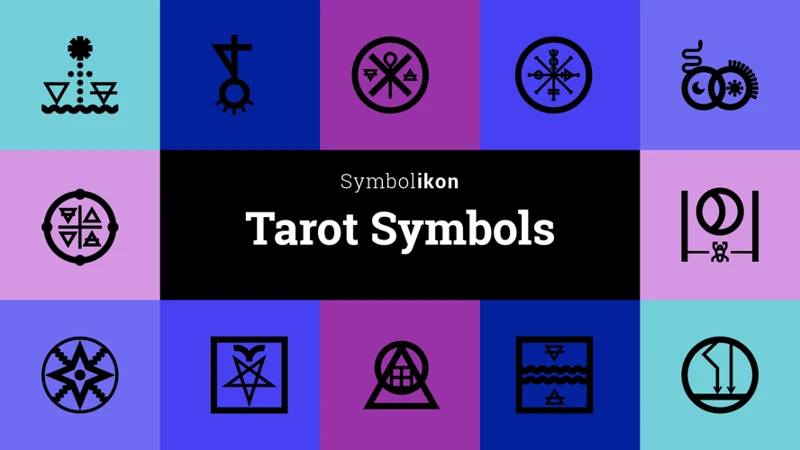
Symbols and imagery are at the very heart of Tarot cards. Every card in the Tarot deck is adorned with a multitude of symbols, each carrying its own significance and message. The power of Tarot lies in its ability to tap into our subconscious mind through these symbols and imagery. Whether it’s the strength and stability represented by the image of a mountain in the Major Arcana or the fluidity and emotion portrayed by the flowing water in the Cups suit of the Minor Arcana, every symbol holds layers of meaning waiting to be unraveled. What makes Tarot even more intriguing is the power of inversion – the reversal of cards. When a card appears upside down in a reading, it adds a new dimension to its symbolism, signaling a departure from its traditional interpretation. This inversion prompts us to look deeper, challenging us to explore contrasting symbolism and hidden truths. By delving into the symbols and imagery of Tarot, we gain access to a universal language that can illuminate our journey and guide us towards greater self-awareness and enlightenment.
The Power of Inversion
The Power of Inversion is a concept that holds significant weight in the world of Tarot cards. When a card appears in a reversed position during a reading, it adds a layer of depth and complexity to its meaning. The inversion of a Tarot card signifies a shift in energy, a disruption of the card’s upright interpretation. This reversal can indicate a challenge, a blockage, or a need for introspection. It provides an opportunity to explore the shadow aspects of oneself or the situation at hand. The Power of Inversion invites us to look beyond the surface level and delve into the hidden meanings and messages that lie within each card. It encourages us to question conventional interpretations and embrace the duality inherent in life. In a reversed position, the energy of a card can be heightened, suppressed, or completely transformed. It calls for a nuanced understanding and prompts us to consider alternative perspectives. The Power of Inversion adds an element of surprise, prompting us to think outside the box and explore the depths of our subconscious. Embracing the power of inversion in Tarot readings allows for a more comprehensive and holistic interpretation of the cards and can lead to profound insights and self-reflection.
Contrasting Symbolism
Contrasting symbolism is a fascinating aspect of Tarot cards that adds depth and complexity to their interpretations. In a Tarot deck, contrasting symbols often appear when a card is reversed, offering a juxtaposition of meanings and energies. These contrasting symbols can challenge our initial understanding of a card and provide a layered perspective that encourages us to explore the duality within ourselves and our experiences. For example, the High Priestess card, when upright, represents intuition, mystery, and the hidden realms of the subconscious. However, when reversed, it may evoke a sense of blocked intuition, secrets, or a need to delve deeper into one’s inner wisdom. The contrasting symbolism in reversed cards invites us to acknowledge and embrace both the light and shadow aspects of life. It reminds us that life is a blend of opposites and teaches us to find balance and harmony within ourselves. Exploring contrasting symbolism in Tarot cards allows us to deepen our understanding of the human experience and gain valuable insights into our own personal journeys.
Common Reversed Card Interpretations
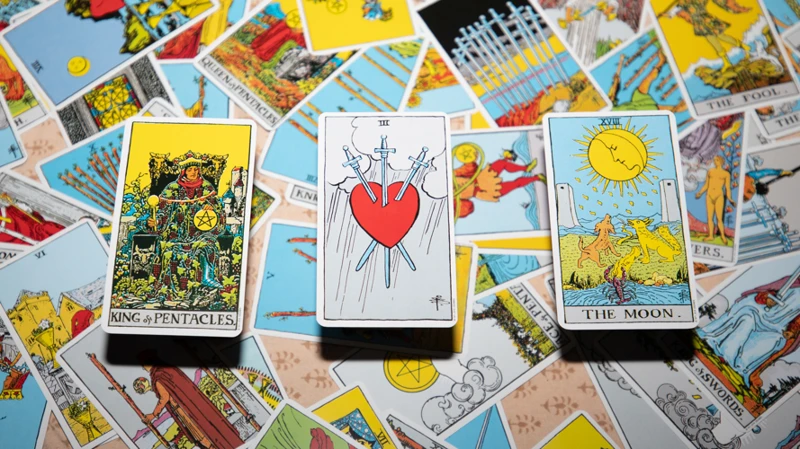
When a Tarot card appears in a reversed position, its meaning can take on a whole new dimension. Reversed cards offer a unique perspective, challenging traditional interpretations and prompting us to look inward. The Fool, typically representing new beginnings and fearlessness, takes on a sense of recklessness and naivety when reversed. The Lovers, symbolizing deep connections and choices, may suggest conflicts and indecision when reversed. And then there’s The Tower, a card associated with sudden upheaval and destruction, which can become a warning of impending disaster when it appears reversed. These are just a few examples of how the reversal of Tarot cards can flip the script and change the narrative. By exploring these common reversed card interpretations, we expand our understanding of the nuances and potential outcomes in a Tarot reading, allowing us to gain a deeper level of insight and wisdom.
The Fool
The Fool, represented by card number zero in the Major Arcana, is a fascinating and enigmatic figure in Tarot. This card often symbolizes new beginnings, fresh starts, and taking a leap of faith. When the Fool appears in a reversed position, it can indicate a reluctance or fear of embracing change, or a potential disregard for consequences. The reversed Fool may also suggest a need for caution and careful consideration before proceeding on a new path. It can signify a lack of direction or a tendency to make impulsive decisions without thinking through the potential outcomes. However, it is important to note that the reversed Fool is not always negative. It can be a reminder to shake off the shackles of societal expectations, embrace your individuality, and approach life with a sense of adventure and spontaneity. The Fool encourages us to step outside of our comfort zones and trust in the journey ahead, even if it may be uncertain or unconventional. It reminds us that sometimes the most rewarding experiences come from taking risks and embracing the unknown. Remember, the Fool is a reminder that life is a grand and daring adventure, and it’s up to us how we choose to navigate it.
The Lovers
The Lovers card in the Tarot deck holds tremendous significance and symbolism. Represented by two individuals standing side by side, sometimes accompanied by an angel overlooking them, this card speaks to themes of love, relationships, and choices. The Lovers card is often associated with harmony, unity, and emotional connection. It signifies a deep bond between two souls, whether romantic or platonic, and highlights the importance of making choices from a place of love and authenticity. The presence of the angel above the couple indicates the influence of higher guidance and spiritual love in their union. However, the Lovers card can also present challenges and dilemmas. It prompts us to examine the choices we make in relationships and the consequences they may have. It reminds us to align our actions with our true values and desires, as well as to be aware of the potential for temptations and distractions. Reversed, the Lovers card may suggest disharmony, conflicts, or a difficult choice that needs to be made. It serves as a reminder to listen to our inner voice and make decisions that are aligned with our highest good. The Lovers card encourages us to explore the complexities of human connection, embrace love in all its forms, and approach relationships with intention, authenticity, and open hearts.
The Tower
The Tower is one of the most powerful and intense cards in the Tarot deck. Its symbolism revolves around sudden change, upheaval, and destruction. In a Tarot reading, the appearance of the Tower card can indicate a major life event that shakes the foundation of our beliefs, structures, or relationships. The card often depicts a tall tower being struck by lightning, with people falling from it. This imagery represents the breaking down of old structures and the release of repressed emotions. The Tower signifies the need to let go of what no longer serves us and embrace the inevitable transformation that comes with it.
The Tower card highlights:
- Disruption and upheaval: The Tower represents a sudden and unexpected event that destroys existing foundations and forces us out of our comfort zones.
- Breakdown of illusions: It strips away false beliefs and exposes the truth, no matter how uncomfortable it may be.
- Releasing repressed emotions: The Tower encourages us to confront and release the emotions we have been suppressing, leading to personal growth and liberation.
- New beginnings: While the Tower may seem destructive, it also paves the way for new opportunities and fresh starts.
- Awakening and enlightenment: The chaotic energy of the Tower can spark a spiritual awakening, challenging us to question our beliefs and seek higher truths.
When the Tower card appears in a reading, it serves as a reminder that we cannot always control what happens to us, but we can control how we respond. It urges us to embrace change and view challenges as opportunities for growth and transformation. Though the Tower may initially bring discomfort, it ultimately clears the path for personal evolution and a stronger, more authentic self.
Tips for Reading Reversed Cards
When it comes to reading reversed cards in Tarot, there are a few key tips and strategies that can help enhance your interpretations. First, it’s important to note that reversed cards often signify a shift or reversal of energy, adding depth and nuance to the overall message of the reading.
Second, pay attention to the context and surrounding cards. Reversed cards can amplify or mitigate the meanings of adjacent cards, so consider how the reversed card interacts with its neighboring cards to gain a more comprehensive understanding.
Third, trust your intuition. While there are traditional interpretations for reversed cards, your intuition and personal connection with the cards should also guide your interpretation. Allow your instincts to come into play when reading reversed cards, as they can provide unique insights and perspectives.
Fourth, consider the elemental associations of the suits. Each suit in Tarot (Wands, Cups, Swords, and Pentacles) corresponds to a specific element (fire, water, air, and earth, respectively). Reversed cards within a specific suit may indicate a disruption or imbalance of the associated element, offering further insight into the reading.
Fifth, keep a journal of your interpretations. Documenting your readings and the meanings you assign to reversed cards can help you track patterns, improve your understanding of the cards, and refine your reading skills over time.
Sixth, practice, practice, practice. The more you work with Tarot and delve into the meanings of reversed cards, the more comfortable and proficient you will become in interpreting them. Embrace the learning process and trust that with time and experience, your interpretation skills will continue to grow.
Following these tips, along with a combination of study, intuition, and practice, will empower you to confidently navigate the world of reversed Tarot cards and unlock their hidden messages. Remember, the reversal of a card doesn’t indicate a negative outcome, but rather a different perspective and an opportunity for growth and transformation.
Conclusion
In conclusion, the power of reversal in Tarot cards cannot be underestimated. By examining the symbols and imagery of reversed cards, we gain a deeper understanding of their meanings and tap into a wealth of hidden insights and messages. Reversals allow us to explore the shadow side of the cards, illuminating aspects of ourselves and situations that may be overlooked or hidden. They provide a nuanced perspective, offering a fresh lens through which to view challenges, opportunities, and personal growth. However, it’s important to remember that the interpretation of reversed cards is not set in stone. The meanings can vary depending on the context, surrounding cards, and the reader’s intuition. Therefore, it’s crucial to approach reversed cards with an open mind and trust your inner guidance when navigating their significance. Whether you’re a believer in Tarot as a mystical tool or simply appreciate it as a psychological tool, the power of reversal invites us to embrace life’s complexities and look beyond the surface. So, as you continue on your Tarot journey, remember to embrace the power of reversal and allow its symbolism to deepen your understanding, ignite your intuition, and unlock the profound wisdom within the cards.
Frequently Asked Questions
What is the origin of Tarot cards?
Tarot cards have a rich and mysterious history. They are believed to have originated in the 15th century as playing cards in Europe. Over time, they evolved into a tool for divination and spiritual exploration.
How does Tarot card reading work?
Tarot card reading involves the reader drawing cards from a deck and interpreting their symbolism to gain insights and guidance. The cards are shuffled and laid out in specific spreads, each representing different aspects of the querent’s life or question.
Can Tarot cards predict the future?
Tarot cards are not about predicting the future in a literal sense. They are a tool for self-reflection and gaining clarity, offering guidance and insights into possible outcomes based on the present moment and the choices made.
What is the significance of reversal in Tarot cards?
The reversal of Tarot cards, also known as a reversed card, adds an additional layer of meaning to the reading. It signifies the energy of the card being blocked, delayed, or in its shadow aspect, offering a deeper understanding of the situation.
How do you interpret reversed cards in Tarot readings?
Interpreting reversed cards requires a nuanced approach. It often indicates a need for introspection, challenges, or a different perspective. Reversed cards can highlight hidden influences, unresolved issues, or a call for change and growth.
Are there common symbols in Tarot cards?
Yes, Tarot cards are filled with symbols that hold universal meanings. For example, the sun represents vitality and joy, while the moon symbolizes intuition and the subconscious mind. These symbols act as gateways to deeper insights during readings.
Can anyone learn to read Tarot cards?
Yes, anyone can learn to read Tarot cards. It requires dedication, practice, and a willingness to explore one’s intuition. There are numerous resources available, including books, online courses, and workshops, to help beginners get started on their Tarot journey.
How accurate are Tarot card readings?
The accuracy of Tarot card readings depends on various factors, including the skill and intuitive abilities of the reader, the clarity of the question asked, and the openness of the querent. Tarot readings are meant to provide guidance rather than concrete predictions.
Yes, Tarot card readings can reveal hidden aspects of oneself. They can shed light on unconscious patterns, desires, fears, and unresolved issues, helping individuals gain a deeper understanding of themselves and their life’s journey.
Are Tarot readings only for predicting the future?
No, Tarot readings are not solely for predicting the future. They are powerful tools for personal growth, self-reflection, and gaining clarity in various areas of life, such as relationships, career, and spirituality. Tarot can provide guidance and insight into the present moment and decision-making processes.
